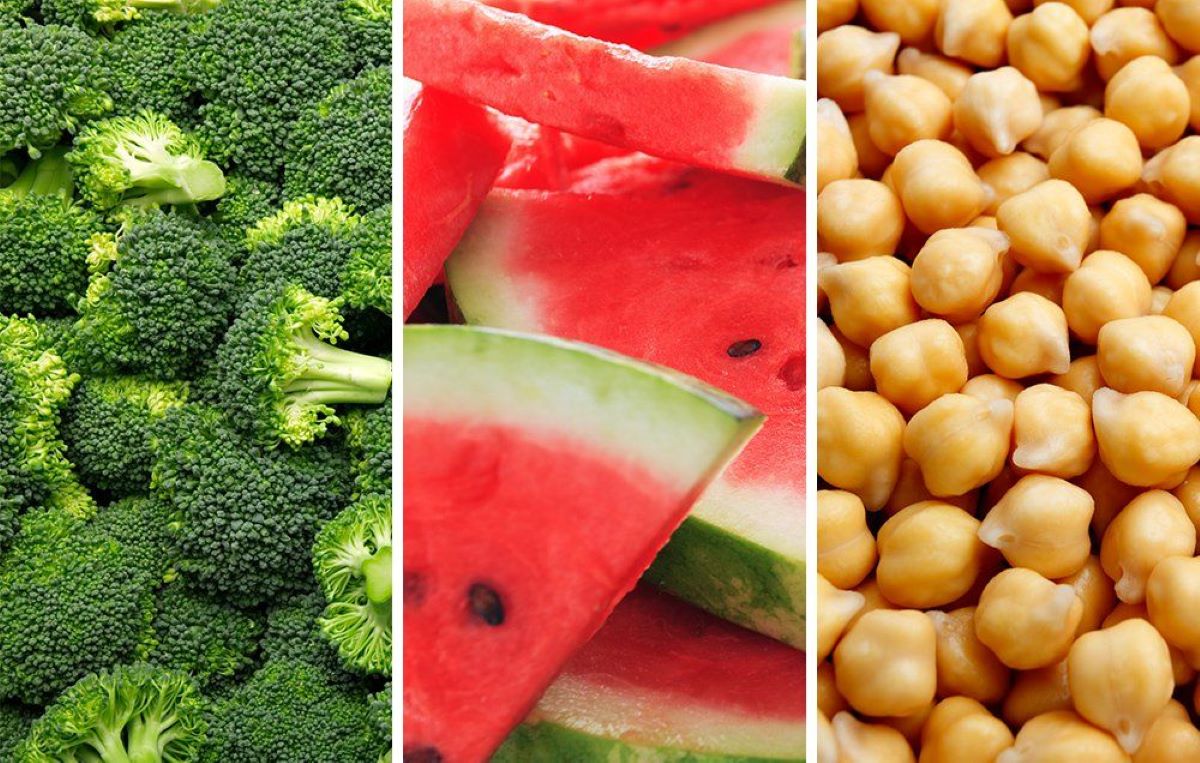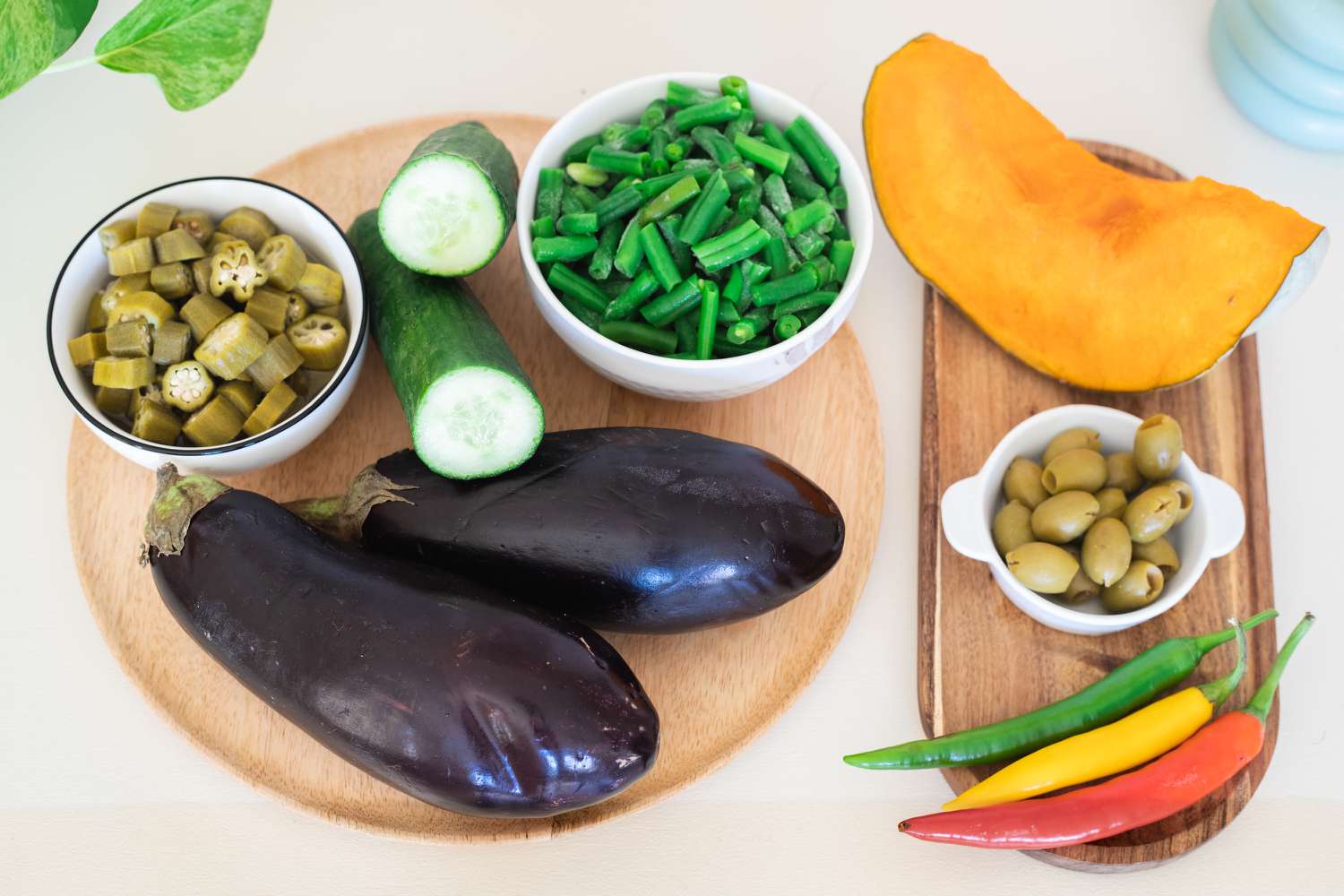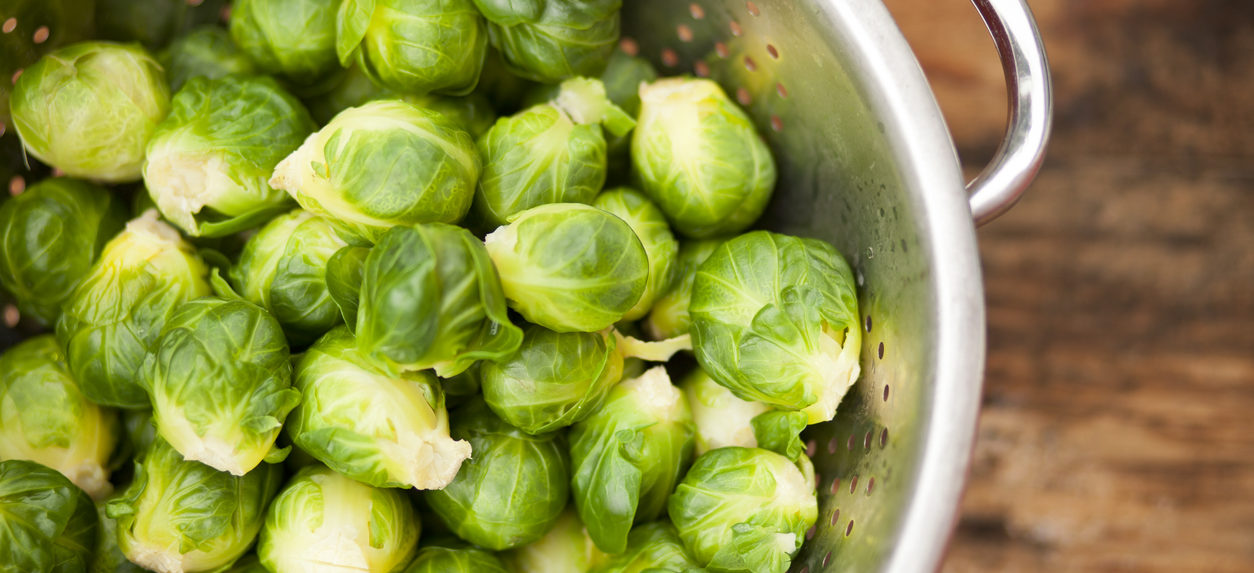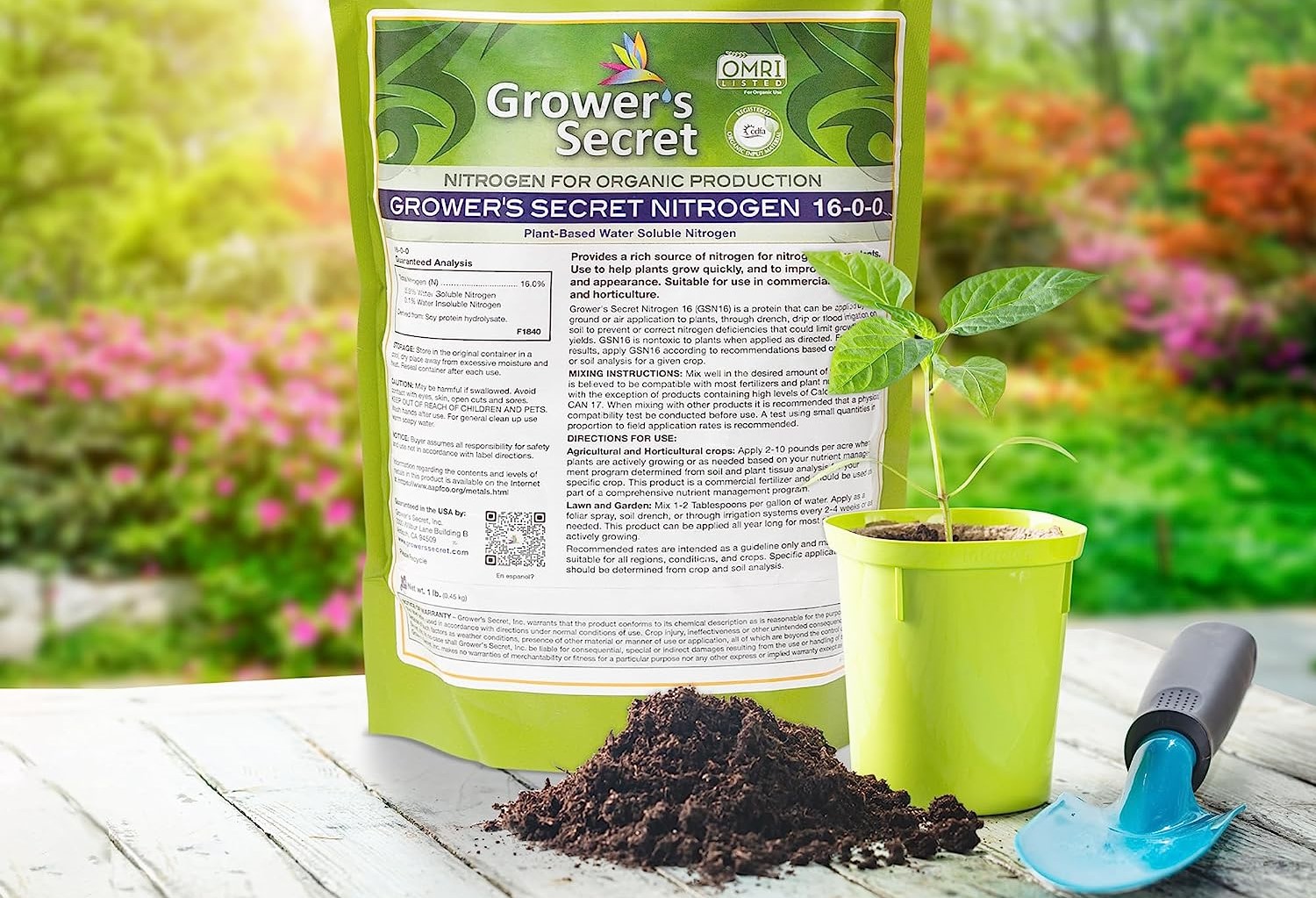Home>Types of Gardening>Edible Gardening>What Are Low Carb Fruits And Vegetables


Edible Gardening
What Are Low Carb Fruits And Vegetables
Published: October 6, 2023
Learn about low carb fruits and vegetables for your edible gardening needs. Discover which options are best for maintaining a healthy and balanced diet.
(Many of the links in this article redirect to a specific reviewed product. Your purchase of these products through affiliate links helps to generate commission for Chicagolandgardening.com, at no extra cost. Learn more)
Table of Contents
Introduction
Welcome to the world of edible gardening! If you’re passionate about growing your own food, you’ve come to the right place. Edible gardening is not only a rewarding hobby, but it also allows you to enjoy the freshest and most nutritious produce right from your own backyard.
One of the key aspects of a successful edible garden is choosing the right plants to grow. While fruits and vegetables are typically associated with healthy eating, not all of them are suitable for a low carb diet. For those who are watching their carbohydrate intake, it’s important to know which fruits and vegetables are low in carbs.
A low carb diet, also known as a ketogenic diet, focuses on reducing the intake of carbohydrates and replacing them with healthy fats and proteins. This way of eating has gained popularity for its potential benefits such as weight loss, improved blood sugar control, and increased energy levels.
In this article, we will explore the world of low carb fruits and vegetables. We will discuss their benefits, provide examples of low carb options, and offer tips on how to incorporate them into your diet. Whether you’re following a low carb diet or simply looking to add more nutritious options to your meals, this guide will help you make informed choices when it comes to edible gardening.
Benefits of a Low Carb Diet
A low carb diet offers several potential benefits for those looking to improve their health and overall well-being. Here are some of the key advantages of following a low carb eating plan:
1. Weight Loss: One of the primary benefits of a low carb diet is weight loss. By reducing your intake of carbohydrates, your body enters a state of ketosis, where it burns stored fat for fuel. This can lead to significant weight loss and a reduction in body fat.
2. Blood Sugar Control: Eating a low carb diet can help stabilize blood sugar levels, making it beneficial for individuals with diabetes or insulin resistance. By limiting the consumption of high-carb foods, you can prevent spikes and crashes in blood sugar, promoting better glucose control.
3. Increased Energy: Many people report increased energy levels when following a low carb diet. This is because, instead of relying on carbohydrates for fuel, your body starts utilizing fat as its primary energy source. This can result in improved stamina and mental clarity throughout the day.
4. Reduced Hunger and Cravings: Low carb diets are known to be satiating, meaning they keep you feeling full for longer periods. By focusing on protein, healthy fats, and nutrient-dense vegetables, you can curb hunger cravings and avoid unnecessary snacking between meals.
5. Improved Heart Health: By limiting the intake of processed carbohydrates and added sugars, a low carb diet can help improve heart health. It has been shown to lower triglyceride levels, increase HDL (good) cholesterol, and reduce blood pressure, all of which contribute to a healthier cardiovascular system.
6. Reduced Inflammation: Chronic inflammation is linked to various health conditions, including heart disease, diabetes, and obesity. Following a low carb diet can help reduce inflammation in the body by minimizing the consumption of foods that promote inflammation, such as refined sugars and processed grains.
7. Better Mental Focus: Many individuals report improved mental clarity and focus when following a low carb diet. This can be attributed to the stable blood sugar levels and the brain’s ability to efficiently utilize ketones as an energy source.
It’s important to note that while a low carb diet can provide numerous benefits, it may not be suitable for everyone. Always consult with a healthcare professional or registered dietitian before making significant dietary changes to ensure it aligns with your specific needs and goals.
Overall, a low carb diet offers a range of potential advantages, from weight loss and improved blood sugar control to increased energy levels and better heart health. By incorporating low carb fruits and vegetables into your diet, you can enjoy these benefits while nourishing your body with essential nutrients.
What are Low Carb Fruits?
Fruits are often considered a healthy addition to any diet due to their abundance of essential vitamins, minerals, and fiber. However, not all fruits are created equal when it comes to their carbohydrate content. Some fruits are naturally lower in carbohydrates, making them suitable for those following a low carb diet.
Low carb fruits are typically those that have a relatively low sugar content and a higher fiber content. This combination helps to slow down the absorption of carbohydrates, preventing spikes in blood sugar levels. These fruits can be enjoyed in moderation while still maintaining a low carb eating plan.
While it’s important to remember that fruits do contain natural sugars, the overall carbohydrate content varies between different types. Here are a few examples of low carb fruits:
- Berries: Berries such as strawberries, raspberries, blackberries, and blueberries are excellent options for those on a low carb diet. They are packed with antioxidants, fiber, and vitamins, while also being relatively low in sugar and carbohydrates. Enjoy them fresh or add them to smoothies, yogurt, or salads.
- Avocado: Technically a fruit, avocados are incredibly nutrient-dense and low in carbs. They are an excellent source of heart-healthy fats, fiber, and vitamins. Incorporate avocados into your diet by making creamy guacamole, adding slices to salads, or enjoying them as a topping on your favorite low carb dishes.
- Citrus Fruits: Citrus fruits like lemons, limes, and grapefruits are relatively low in carbs and provide a refreshing burst of flavor. They are also high in vitamin C and other beneficial compounds. Squeeze them into water for a refreshing drink or use their zest and juice to enhance the flavor of your dishes.
- Melon: Certain melons, like cantaloupe and watermelon, can be enjoyed in moderation on a low carb diet. While they contain some natural sugars, they are also high in water content and fiber. Consider portion control and enjoy these melons as a refreshing treat in the summer months.
- Tomatoes: Tomatoes are technically a fruit, and they have a relatively low carbohydrate content. They are rich in lycopene, vitamin C, and other antioxidants. Enjoy them fresh in salads, as a base for homemade sauces, or roasted for a burst of intense flavor.
These are just a few examples of low carb fruits, but there are several other options to explore. Remember to practice portion control and incorporate a variety of fruits into your diet to ensure a well-rounded intake of essential nutrients.
Examples of Low Carb Fruits
When following a low carb diet, it’s important to choose fruits that are lower in carbohydrates compared to other varieties. Here are some delicious examples of low carb fruits that you can enjoy while still maintaining your low carb lifestyle:
- Strawberries: Known for their vibrant red color and sweet taste, strawberries are an excellent choice for a low carb fruit. They are rich in vitamin C, antioxidants, and fiber. Enjoy them on their own, add them to yogurt or smoothies, or use them as a topping for salads.
- Raspberries: These delicate berries are not only low in carbs but also packed with antioxidants and fiber. Raspberries provide a tangy and slightly sweet flavor. Enjoy them as a snack, blend them into smoothies, or use them to garnish desserts and salads.
- Blackberries: Blackberries are another great option when it comes to low carb fruits. They are rich in antioxidants and dietary fiber. Enjoy them on their own, mix them into yogurt, or incorporate them into baked goods for a burst of flavor.
- Blueberries: Although slightly higher in carbs compared to other berries, blueberries are still relatively low in carbohydrates and boast numerous health benefits. They are loaded with antioxidants and other important nutrients. Enjoy them in moderation as a snack, or add them to oatmeal or yogurt for a delicious and nutritious meal.
- Avocado: Though technically a fruit, avocados are an excellent choice for a low carb diet. They are rich in healthy fats, including omega-3 fatty acids, and provide fiber and essential vitamins. Enjoy them as guacamole, sliced on salads, or as a topping for low carb toast.
- Lemons and Limes: Citrus fruits like lemons and limes are low in carbs and full of flavor. They are rich in vitamin C and can be used to add a zesty kick to savory dishes, dressings, or beverages. Squeeze them over grilled meats, use their juice in marinades, or infuse water with slices for a refreshing twist.
- Cantaloupe: While some melons can be higher in carbohydrates, cantaloupe is a low carb option that provides hydration and natural sweetness. Enjoy it in moderation as a refreshing snack or combine it with prosciutto for a sweet and savory appetizer.
- Tomatoes: Tomatoes, another fruit in disguise, are relatively low in carbohydrates and offer a burst of flavor to your dishes. They are a great source of lycopene, vitamin C, and other antioxidants. Use them in salads, sandwiches, sauces, or enjoy them as a snack with a sprinkle of salt and pepper.
Remember, while these fruits are lower in carbohydrates, it’s important to practice portion control and be mindful of your overall carb intake. Incorporating a variety of low carb fruits into your diet can provide essential nutrients and satisfy your craving for something sweet without derailing your low carb lifestyle.
What are Low Carb Vegetables?
Vegetables are a crucial component of a healthy diet, providing essential nutrients, fiber, and a variety of health benefits. For those following a low carb diet, it’s important to choose vegetables that are relatively low in carbohydrates to keep your carb intake in check.
Low carb vegetables are typically those that have a high water and fiber content while being lower in sugar and starch. These vegetables are not only nutritious but can also help you feel satisfied and maintain stable blood sugar levels. Incorporating these vegetables into your meals can add color, flavor, and essential nutrients to your diet.
Here are a few examples of low carb vegetables that you can enjoy while following a low carb lifestyle:
- Leafy Greens: Leafy greens such as spinach, kale, lettuce, and Swiss chard are excellent low carb options. They are packed with vitamins, minerals, and fiber, making them a great choice for salads, stir-fries, or as a bed for protein-rich dishes.
- Cruciferous Vegetables: Vegetables like broccoli, cauliflower, Brussels sprouts, and cabbage are low in carbs and full of beneficial nutrients. They are rich in fiber, vitamins, and antioxidants. Roast them, steam them, or use them in stir-fries or salads for a healthy and satisfying meal.
- Zucchini: This versatile vegetable is low in carbs and can be used in a variety of ways. You can spiralize it into noodles, sauté it as a side dish, or even use it as a substitute for pizza crust or lasagna noodles.
- Bell Peppers: Bell peppers come in a vibrant array of colors and are low in carbs. They are an excellent source of vitamin C and other antioxidants. Enjoy them raw in salads, sauté them with other vegetables, or stuff them with a delicious filling for a flavorful meal.
- Cucumbers: Cucumbers are refreshing, hydrating, and low in carbs. They are an excellent addition to salads, or you can enjoy them as a snack with a sprinkle of salt and pepper. You can also slice them and use them as a base for homemade cucumber sandwiches.
- Mushrooms: Mushrooms are low in carbs and provide a savory flavor to various dishes. They are rich in antioxidants and have been shown to have immune-boosting properties. Sauté them, grill them, or add them to soups and stir-fries for a burst of umami flavor.
- Asparagus: Asparagus is a nutrient-dense vegetable that is low in carbs and high in fiber. It is also a good source of vitamins A, C, and K. Roast it, grill it, or steam it and enjoy it as a side dish or as a component of a main course.
- Green Beans: Green beans are a low carb vegetable that is rich in fiber, vitamins, and minerals. They can be steamed, sautéed, or roasted and make a delicious side dish or addition to salads, stir-fries, or casseroles.
These are just a few examples of low carb vegetables, but there are many more options available. Incorporate a variety of these vegetables into your meals to enjoy their nutritional benefits and add color and flavor to your low carb dishes.
Examples of Low Carb Vegetables
When following a low carb diet, incorporating a wide variety of vegetables is essential. Luckily, there are plenty of delicious and nutritious low carb vegetables to choose from. Here are some examples that you can add to your low carb meal plan:
- Spinach: Spinach is a nutrient powerhouse that is low in carbs and high in vitamins and minerals. Enjoy it raw in salads, sauté it as a side dish, or add it to smoothies or omelets for an extra boost of nutrition.
- Kale: Known for its robust flavor and impressive nutrient profile, kale is a low carb superfood. Use it in salads, make kale chips, or incorporate it into soups or stir-fries for a healthy and flavorful meal.
- Broccoli: Broccoli is a versatile vegetable that is low in carbs and high in fiber. It is packed with vitamins and minerals, including vitamin C and folate. Enjoy it steamed, roasted, or stir-fried as a delicious side dish or as a main ingredient in soups or stir-fries.
- Cauliflower: Cauliflower is a favorite low carb vegetable that serves as a versatile substitute for high carb foods. It can be riced to make cauliflower rice, mashed to create cauliflower mash, or even used to make a low carb pizza crust. Its mild flavor makes it an excellent base for various dishes.
- Bell Peppers: Bell peppers are not only eye-catching with their vibrant colors but are also low in carbs. They are a great source of vitamin C and contain antioxidants that promote overall health. Enjoy them raw in salads, grill or sauté them, or stuff them for a delicious and nutritious meal.
- Mushrooms: Mushrooms are low in carbs and offer a savory flavor to any dish. They come in various types like button, cremini, and portobello, each adding a unique taste and texture. Sauté them, stuff them, or use them in stir-fries and soups to enhance the umami factor.
- Zucchini: Zucchini is a versatile vegetable that is low in carbs and can be used in various ways. Spiralize it into noodles, slice it and use it as a low carb lasagna substitute, or sauté it as a side dish. It’s a great way to add a low carb twist to your favorite recipes.
- Asparagus: Asparagus is a flavorful low carb vegetable that is packed with vitamins, minerals, and fiber. It can be grilled, roasted, or steamed and makes a delicious side dish or an ingredient in salads, omelets, or stir-fries.
- Cabbage: Cabbage is a cruciferous vegetable that is low in carbs and provides fiber and essential nutrients. Use it in coleslaw, sauté it as a side dish, or make savory cabbage rolls for a hearty and low carb meal option.
These are just a few examples of low carb vegetables, but there are countless others to explore. Incorporating a variety of these vegetables into your low carb diet will not only keep your meals exciting but also provide you with a range of essential nutrients to support your overall health.
How to Incorporate Low Carb Fruits and Vegetables into Your Diet
Incorporating low carb fruits and vegetables into your diet is a great way to enhance nutrition and add variety to your meals. Here are some tips on how to include these nutrient-rich options in your low carb eating plan:
1. Make salads: Salads are a fantastic way to combine different low carb vegetables with a splash of low carb fruits. Use a variety of leafy greens as a base, then add in vegetables such as cucumbers, bell peppers, and cherry tomatoes. Toss in some low carb fruits like berries or avocado for added flavor and texture. Dress it up with olive oil, vinegar, or a low carb dressing of your choice.
2. Roast or grill: Roasting or grilling vegetables brings out their natural flavors and caramelizes them, making them delicious additions to your meals. Try roasting cauliflower, broccoli, or asparagus with some olive oil, garlic, and seasonings. Grilling bell peppers, zucchini, or eggplant can also add a smoky flavor to your dishes.
3. Blend into smoothies: Low carb fruits like berries and avocado can be blended with low carb vegetables like spinach or kale to create a nutritious and satisfying smoothie. Add some almond milk or coconut milk, a scoop of low carb protein powder, and a handful of ice for a refreshing and filling beverage.
4. Stir-fry: Stir-frying is a quick and easy way to incorporate low carb vegetables into your meals. Use a mix of colorful vegetables like broccoli, bell peppers, mushrooms, and zucchini. Add in some protein such as chicken, beef, or tofu, and season with low carb sauces like soy sauce or coconut aminos.
5. Experiment with low carb substitutes: Explore low carb vegetable substitutes for high carb ingredients in your favorite recipes. For example, use zucchini or spaghetti squash instead of pasta, cauliflower rice instead of regular rice, or lettuce wraps instead of tortillas. These swaps can help reduce your carb intake while still enjoying your favorite dishes.
6. Snack on low carb fruits: Enjoy low carb fruits as a healthy and satisfying snack option. Keep a selection of berries, sliced cucumber, or cherry tomatoes in your fridge for easy access. Pair them with some nuts or a dollop of nut butter for added protein and satiety.
7. Incorporate in low carb desserts: Indulge in low carb desserts by using low carb fruits like berries or avocado as a base. Create a delicious chia seed pudding or a creamy avocado chocolate mousse. These alternatives can satisfy your sweet tooth while staying within your low carb limits.
Remember to watch your portion sizes and keep track of your overall carb intake, as even low carb fruits and vegetables can contribute to your daily carb count. Aim to include a colorful variety of low carb fruits and vegetables in your daily meals to ensure you receive a wide range of essential vitamins, minerals, and antioxidants while maintaining a low carb lifestyle.
Conclusion
Incorporating low carb fruits and vegetables into your diet is a wonderful way to support your health while maintaining a low carb lifestyle. These nutrient-packed options provide essential vitamins, minerals, and fiber, all while keeping your carbohydrate consumption in check. By being mindful of the types and quantities of fruits and vegetables you consume, you can enjoy the benefits of a low carb diet while still enjoying a colorful and flavorful array of produce.
Low carb fruits like berries, avocado, citrus fruits, melons, and tomatoes offer a range of flavors, textures, and nutrients. They can be enjoyed as snacks, incorporated into meals, or used as toppings or fillings. Likewise, low carb vegetables such as leafy greens, cruciferous vegetables, zucchini, mushrooms, and asparagus offer versatility and endless possibilities for culinary exploration.
To incorporate these low carb options into your diet, consider making salads with a variety of vegetables and adding a splash of low carb fruits. Experiment with roasting or grilling vegetables to bring out their natural flavors. Blend low carb fruits and vegetables into smoothies for a refreshing and nutrient-dense beverage. Explore stir-frying techniques to create quick and flavorful meals. And don’t forget to enjoy low carb fruits and vegetables as snacks or in low carb desserts.
Remember, it’s important to practice portion control and be mindful of your overall carbohydrate intake, even when consuming low carb fruits and vegetables. Everyone’s dietary needs and preferences may vary, so it’s always a good idea to consult with a healthcare professional or registered dietitian for personalized guidance.
By incorporating low carb fruits and vegetables into your diet, you can enjoy their nutritional benefits, enhance the flavor and variety of your meals, and support your overall health and well-being. So start exploring the world of low carb edible gardening and savor the delicious and nutritious bounty it offers.










